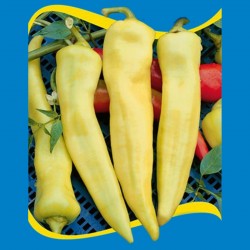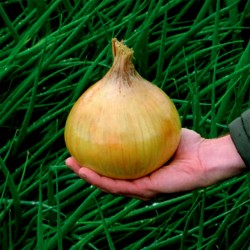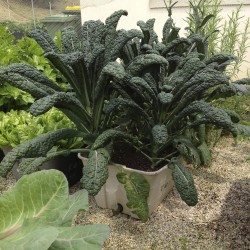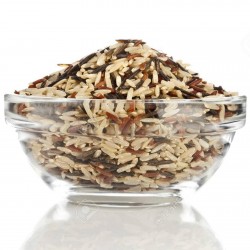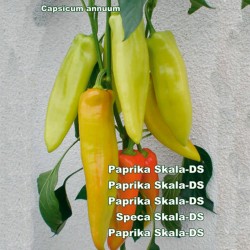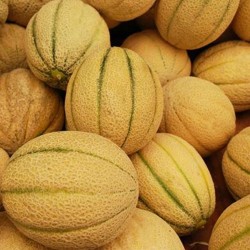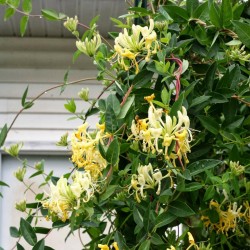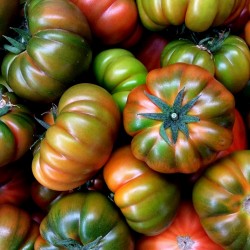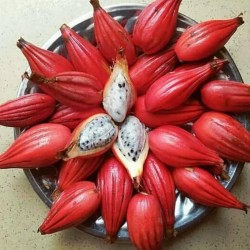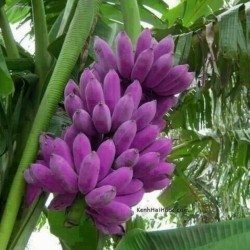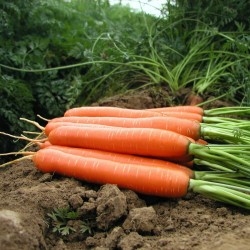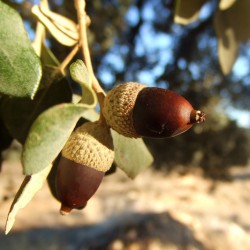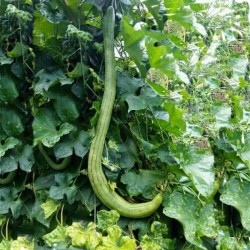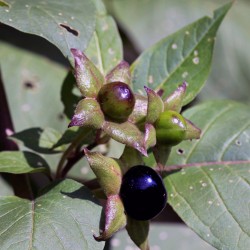
Nadragulya, Ördög...
Ár
3,75 €
(SKU: MHS 58)
Seeds Gallery EU,
5/
5
<!DOCTYPE html>
<html>
<head>
<meta http-equiv="Content-Type" content="text/html; charset=UTF-8" />
</head>
<body>
<h2><strong>Nadragulya, Ördög Cseresznye mag (Atropa belladonna)</strong></h2>
<h2><span style="color: #ff0000;"><strong>5 magos csomag ára.</strong></span></h2>
<p>Az Atropa Belladonnát vagy <span style="color: #000000;"><strong>ördög cseresznyét</strong></span> több mint két évezreden át használták gyógyszer-, kozmetikai-, méreg- és boszorkánynövényként. A Belladonna évelő, magvas, elágazó növény, amely akár 1,5 méter magasra is megnő, levelei 12-13 cm hosszúak és lila szárúak. Télen meghal, tavasszal újra kihajt.</p>
<p>A boszorkányok évszázadok óta használják a tápszerekben, általában a velencei nőknél, és különösen az "éjszakai hölgyeknél" a szemek tágítására, és jelenleg a mozgásbetegségek, az IBS és más bélbetegségek elleni gyógyszerként használják. Belladonnát egész hadsereg megmérgezésére is használták a háborúban. Azt mondják, hogy Sátán személyesen gondozta ezt a növényt és kis "ördögcseresznyéjét".</p>
<p>Pszichotróp / mérgező / életmentő alkaloidokat tartalmaz, beleértve az atropint is. Ez a növény gyógyszer, hallucinogén és méreg. A halál történhet (és előfordul is) rosszul tájékozott emberek részéről, például ha túl sok érett bogyót eszel pitében, ezért ne tegye. A bogyók finomak (én magam ettem meg őket, és nagyon finomak). Ez egy olyan növény, amely az elsődleges összetevője a "Flying Formula" titkos tápnak, amelyet a boszorkányok évszázadok óta használnak.</p>
<p>Ez a gyógynövény valóban éreztetheti veled, hogy a lelked utazik, de a túl sok fogyasztás végzetes lehet. Használható gázmérgezés ellenszereként is.</p>
<h3><strong>Kultúra</strong></h3>
<p>Szaporítható magvak vagy dugványok vetésével, bár a magvak használata inkább ajánlott. A magokat néhány órával a vetés előtt forró vízbe kell helyezni. Időre van szükségük a csírázáshoz, magas páratartalomra és hőre van szükségük, és az összes szükséges feltétel fenntartása mellett a csírázás nem nagy. A növények értékelni fogják a trágyával és párás, árnyékos környezettel rendelkező komposzt szubsztrátumot. A nitrátok és az ammóniumsók a legjobb műtrágya az alkaloidok mennyiségének megduplázásához.</p>
<h3><strong>WIKIPEDIA</strong></h3>
<p>A<span> </span><b>nadragulya</b><span> </span>vagy<span> </span><b>maszlagos nadragulya</b><span> </span><i>(Atropa bella-donna)</i><span> </span>hazánkban<span> </span>leginkább a bükkös vágásterületeken jelenik meg,<span> </span>cserje<span> </span>nagyságú, de<span> </span>lágyszárú<span> </span>évelő. A<span> </span>mérsékelt öv<span> </span>egyik legmérgezőbb növénye. Nemzetségének a<span> </span>típusfaja.</p>
<p>Népies nevei: álomhozófű, farkasbogyó, farkascseresznye, mérges cseresznye, bolondítófű, szép asszony füve, veszett fű, ördögfű.</p>
<p>A tropán-vázas<span> </span>alkaloidokat<span> </span>(atropint, L-hioszciamint<span> </span>és<span> </span>belladonint) legnagyobb mennyiségben a bogyó tartalmazza és ezért súlyosan mérgező. A levél virágzás idején, napos, nyári időben, a gyökér 2-3 éves korában, ősszel vagy tavasszal tartalmazza a legtöbb hatóanyagot.</p>
<p>Az összalkaloidok háromnegyedét az L-hioszciamin teszi ki, amely a szárítás során atropinná alakul, emellett kisebb mennyiségben belladonnin és nyomokban<span> </span>szkopolamin, apoatropin,<span> </span>kuszkohigrin,<span> </span>metilpirrolidin,<span> </span>tropin<span> </span>is előfordul benne.</p>
<p>Atropintartalma miatt a növény kivonata<span> </span>pupillatágító<span> </span>hatású, ezért a<span> </span>középkorban<span> </span>– főleg az<span> </span>olasz<span> </span>–<span> </span>nők<span> </span>előszeretettel alkalmazták „szépítőszerként” a növény forrázatát szemcseppként alkalmazva.<sup id="cite_ref-1" class="reference">[1]</sup><span> </span>A Magyar néprajzi lexikon szerint a „szépasszony”: a magyar népi hitvilág hol jó-, hol rosszindulatú, természetfeletti lénye, aki a<span> </span>boszorkány, illetve a<span> </span>tündér<span> </span>bizonyos vonásaival egyaránt rendelkezik. Eufemisztikus (szépítő) nevet visel. Magyarán a szépasszony füvének/boszorkányfűnek lehetne fordítani (a szépasszony mint boszorkány nemcsak Magyarországon, hanem európai kultúrkörben is elterjedt kifejezés volt). A szemészetben ma is alkalmaznak atropintartalmú szemcseppeket pupillatágításra bizonyos vizsgálatokhoz.</p>
<table class="dablink noprint noviewer" cellpadding="0" cellspacing="0">
<tbody>
<tr>
<td><img alt="Searchtool right.svg" src="https://upload.wikimedia.org/wikipedia/commons/thumb/3/32/Searchtool_right.svg/14px-Searchtool_right.svg.png" decoding="async" width="14" height="14" srcset="//upload.wikimedia.org/wikipedia/commons/thumb/3/32/Searchtool_right.svg/21px-Searchtool_right.svg.png 1.5x, //upload.wikimedia.org/wikipedia/commons/thumb/3/32/Searchtool_right.svg/28px-Searchtool_right.svg.png 2x" data-file-width="60" data-file-height="60" /></td>
<td><i>Bővebben:<span> </span>Atropin</i></td>
</tr>
</tbody>
</table>
<p>Nevét gyakran „nadrágujjas emberkének” ferdítik, és emiatt összekeverik rokonával, az ugyancsak a<span> </span>burgonyafélék<span> </span>közé tartozó<span> </span>mandragórával, aminek<span> </span>gyökere<span> </span>emberke alakú.</p>
<h2><span class="mw-headline" id="Előfordulása">Előfordulása</span></h2>
<p>A nadragulya<span> </span>Európában,<span> </span>Ázsia<span> </span>nyugati részén és<span> </span>Afrika<span> </span>északnyugati részein őshonos.<span> </span>Indiában,<span> </span>Pakisztánban, az<span> </span>Amerikai Egyesült Államokban<span> </span>és<span> </span>Brazíliában<span> </span>termesztik. Magyarországon többek közt a<span> </span>Gödöllői-dombság<span> </span>területén él.<sup id="cite_ref-2" class="reference">[2]</sup></p>
<h2><span id="Megjelen.C3.A9se"></span><span class="mw-headline" id="Megjelenése">Megjelenése</span></h2>
<p>A nadragulya 50–100 centiméter magas, gazdagon elágazó<span> </span>szárú,<span> </span>évelő növény. Tojás alakú, ép szélű, nyélre futó<span> </span>levelei<span> </span>körülbelül 15 centiméter hosszúak. A<span> </span>virágok<span> </span>egyesével fejlődnek a levélhónaljakban, harang alakú, 2–3,5 centiméteres pártájuk kívül barnás ibolyaszínű, belül sárgászöld. A termés fényes<span> </span>fekete<span> </span>bogyó.</p>
<h2><span id=".C3.89letm.C3.B3dja"></span><span class="mw-headline" id="Életmódja">Életmódja</span></h2>
<p>A maszlagos nadragulya nyirkos lomb- és elegyes<span> </span>erdők<span> </span>lakója. A virágzási ideje június-augusztus között van. Bogyói erősen mérgezők, gyermekeknél 3-4 darab elfogyasztása halálos lehet.</p>
</body>
</html>
MHS 58 (5 S)







